Pea gravel is a popular choice for homeowners and landscapers looking for a versatile, affordable, and visually appealing material. Known for its smooth texture and rounded edges, pea gravel is often used in pathways, patios, gardens, and as decorative accents in outdoor spaces. Its natural appearance and wide range of colors make it suitable for various landscaping styles, from rustic to modern. In this guide, we’ll cover everything you need to know about pea gravel, including its benefits, common uses, installation tips, and maintenance advice, to help you decide if it’s the right choice for your next project.

a. What Is Pea Gravel?
Pea gravel is a small, rounded stone widely used in landscaping and construction projects. These stones typically range in size from 1/8 to 3/8 inches in diameter and are known for their smooth, polished texture, which results from natural weathering and erosion. Pea gravel comes in various colors, including shades of white, gray, brown, and even red, making it a versatile option for various design styles.
Unlike crushed stone or other types of gravel, pea gravel stands out due to its uniform size and rounded edges. This distinctive shape makes it aesthetically pleasing and comfortable to walk on, making it ideal for pathways, patios, and garden areas.
The term “pea gravel” is derived from the size of the stones, which resemble small peas. This material is commonly sourced from riverbeds or quarries, where it is naturally smoothed over time by the flow of water. Its compact size and lightweight nature make it easy to transport, install, and maintain, further contributing to its popularity among homeowners and landscapers.
When compared to other types of gravel, pea gravel offers several advantages. Its rounded shape ensures that it is less likely to compact over time, allowing for better drainage and reducing the risk of water pooling. Additionally, its visually appealing appearance makes it a decorative element in many outdoor projects. Whether used as a ground cover, in driveways or as a filler between stepping stones, pea gravel provides both functionality and aesthetic value.
In summary, pea gravel is a practical, affordable, and attractive option for a wide range of outdoor applications. Its unique characteristics make it a go-to choice for those looking to enhance their landscaping with minimal effort.
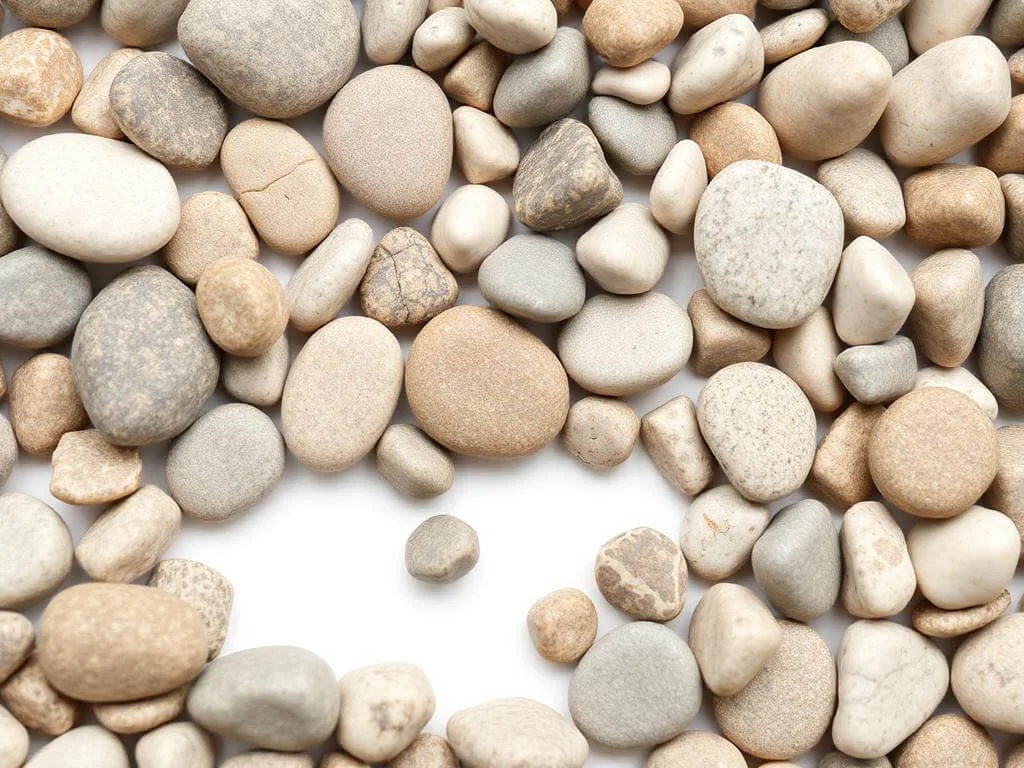
b. Benefits of Using Pea Gravel in Landscaping
Pea gravel is one of the most versatile and cost-effective materials for landscaping projects. Its unique properties and wide range of applications make it an attractive choice for both professionals and DIY enthusiasts. Below are some of the key benefits of using pea gravel in landscaping:
1. Cost-Effectiveness
Compared to other landscaping materials, pea gravel is highly affordable. Its low cost makes it an excellent choice for large-scale projects like walkways, driveways, or garden paths. Additionally, since it is readily available, you can save on transportation and delivery expenses, further enhancing its appeal as a budget-friendly option.
2. Versatility
Pea gravel’s adaptability is unmatched. It can be used in various applications, such as creating pathways, decorating garden beds, or filling spaces between stepping stones. The smooth and rounded texture of pea gravel makes it a comfortable surface to walk on, which is ideal for patios and play areas. Its neutral and natural colors can seamlessly blend into any landscaping style, from modern designs to rustic settings.
3. Improved Drainage
One of the standout benefits of pea gravel is its ability to promote excellent drainage. The small, round stones do not compact tightly, allowing water to flow through easily. This makes pea gravel a perfect choice for areas prone to heavy rainfall or where drainage is a concern. Many homeowners use it to prevent water pooling around foundations or to line the base of garden beds to protect plant roots from excessive moisture.
4. Low Maintenance
Pea gravel is known for its low maintenance requirements. Unlike grass or other organic ground covers, it does not need regular watering, trimming, or fertilization. Occasional raking to level the surface and prevent weed growth is usually sufficient. With the addition of a weed barrier underneath, maintenance becomes even easier.
5. Aesthetic Appeal
The natural beauty of pea gravel adds a decorative touch to outdoor spaces. Its smooth, polished surface and variety of color options create an elegant yet earthy look. Whether used as a filler around flower beds or as a standalone design element, pea gravel enhances the overall visual appeal of any landscape.
6. Durability and Longevity
Pea gravel is highly durable and can withstand various weather conditions, making it a long-lasting choice for landscaping projects. It resists erosion, which helps maintain its appearance and functionality over time. This durability ensures that your investment in pea gravel provides value for years to come.
7. Eco-Friendly Option
For environmentally conscious homeowners, pea gravel is an excellent choice. As a natural material, it has minimal environmental impact and can often be recycled or repurposed. Additionally, its drainage properties can help reduce water waste in landscaping.
By incorporating pea gravel into your landscaping, you can enjoy a material that is not only functional and affordable but also aesthetically pleasing and sustainable. Whether for a small garden project or a complete outdoor renovation, pea gravel offers a host of benefits that make it a top choice for any landscape design.
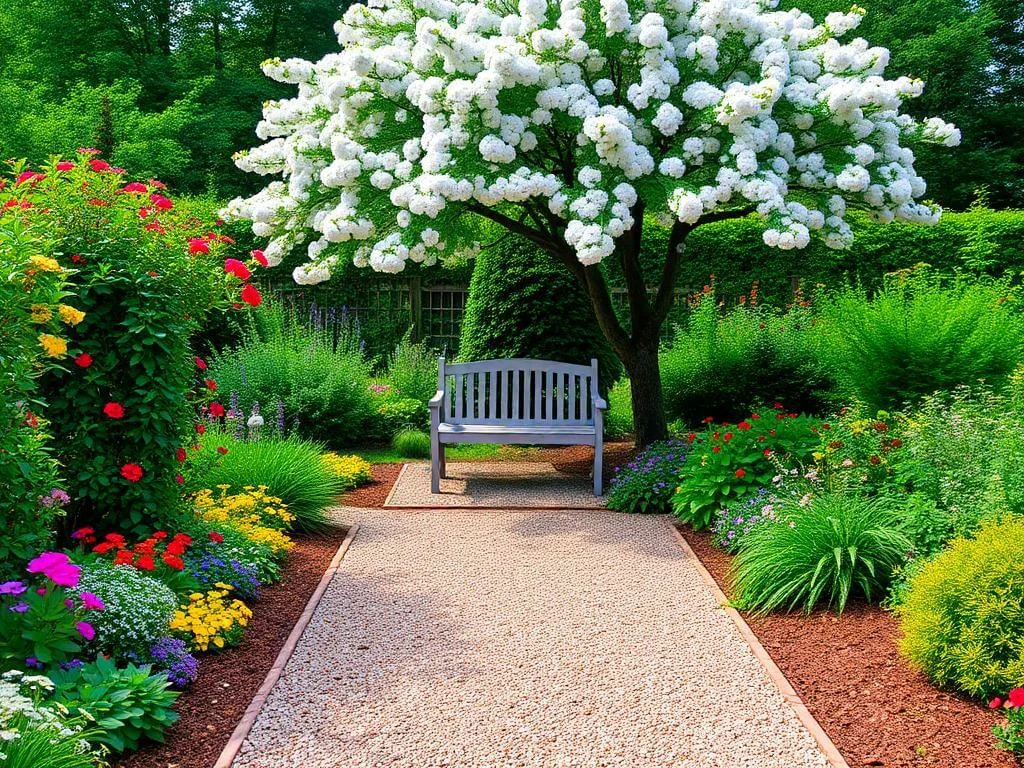
c. Common Uses of Pea Gravel
Pea gravel is a versatile material that offers both practical and aesthetic benefits, making it suitable for a variety of landscaping and construction projects. Its smooth texture, compact size, and natural appearance allow it to blend seamlessly into different outdoor designs. Here are some of the most common uses of pea gravel in landscaping:
1. Walkways and Garden Paths
Pea gravel is an excellent choice for creating walkways and garden paths. Its smooth, rounded stones provide a comfortable surface for walking, and its natural appearance enhances the beauty of any garden. Additionally, pea gravel is easy to install and allows water to drain effectively, reducing the risk of puddles or erosion on paths. Adding edging materials like bricks or metal borders can help keep the gravel in place and create a clean, defined look.
2. Patios and Outdoor Seating Areas
For homeowners looking for a cost-effective alternative to traditional patio materials, pea gravel offers a stylish and practical solution. It creates a stable and comfortable surface that works well for outdoor seating areas, fire pits, or dining spaces. The soft texture of pea gravel makes it a more forgiving surface compared to harder materials like concrete or pavers, and it pairs beautifully with outdoor furniture and decor.
3. Mulch Alternative for Garden Beds
Pea gravel is a popular alternative to traditional organic mulches like wood chips or bark. It helps retain soil moisture, suppress weeds, and prevent erosion, all while providing a decorative and tidy appearance. Unlike organic mulch, pea gravel doesn’t decompose over time, which means less frequent replacement and long-term savings. Its light color can also help reflect sunlight, keeping plant roots cooler in hot weather.
4. Decorative Accents Around Water Features
Pea gravel is often used to enhance the appearance of water features such as ponds, fountains, or streams. Its natural look complements the flowing water, creating a serene and cohesive aesthetic. The material’s drainage properties are particularly beneficial in these settings, as it helps manage excess water and reduces the risk of pooling around the feature.
5. Driveways and Parking Areas
Although less common, pea gravel can be used for driveways and parking areas, particularly in residential settings. Its smooth texture and rounded edges create a visually appealing surface that is durable and easy to maintain. To ensure the gravel stays in place, consider installing a stabilizing grid or edging.
6. Filling Spaces Between Stepping Stones
Pea gravel is ideal for filling gaps between stepping stones, creating a polished and cohesive look. Its small size and smooth texture make it easy to spread evenly, while its natural drainage properties help prevent water accumulation around the stones. This application is both functional and decorative, adding charm to walkways or garden paths.
7. Playgrounds and Recreational Areas
Thanks to its soft and rounded texture, pea gravel is often used as a surface material for playgrounds and recreational areas. It provides a safe and cushioned base for children to play on while being durable enough to withstand heavy use. Proper depth and containment ensure safety and keep the material in place.
Pea gravel’s wide range of uses, from practical applications to decorative enhancements, makes it an indispensable material for landscaping projects. Its ability to adapt to different environments and styles ensures that it remains a popular choice for homeowners and professionals alike.
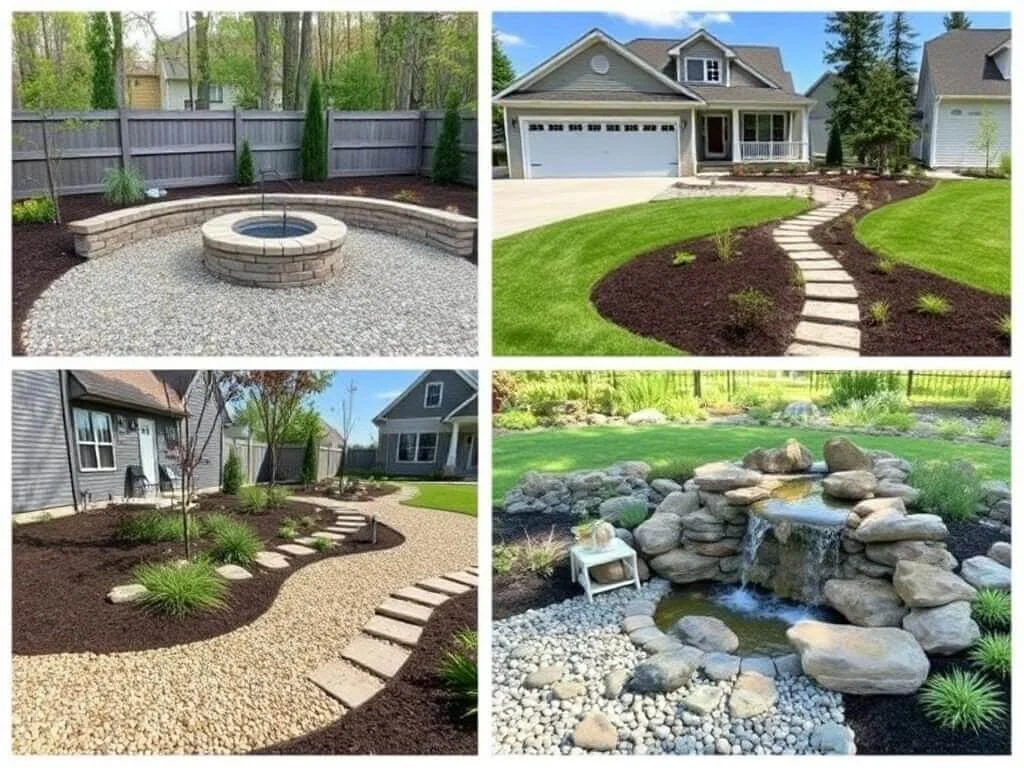
d. How to Install Pea Gravel for Your Project
Installing pea gravel is a straightforward process that can transform outdoor spaces into functional and aesthetically pleasing areas. With proper planning and preparation, you can achieve professional-looking results that are durable and long-lasting. Follow these steps to ensure a successful installation:
1. Gather Your Tools and Materials
Before you begin, make sure you have all the necessary tools and materials. These typically include:
- Pea gravel
- A shovel and rake
- A wheelbarrow for transportation
- Landscape fabric or weed barrier
- Edging materials such as metal, plastic, or stone
- A tamper or plate compactor
Having everything ready will make the installation process smoother and more efficient.
2. Plan and Mark the Area
Start by determining the area where you want to install the pea gravel. Use stakes, string, or spray paint to outline the space. This step helps you visualize the final result and ensures accurate measurements for the amount of pea gravel needed.
3. Prepare the Base
Proper base preparation is crucial for creating a stable and long-lasting surface:
- Excavate the area: Dig down 3-4 inches to remove grass, soil, and debris. This depth allows enough space for the gravel and ensures a level surface.
- Level the ground: Use a rake to level the base and remove any uneven spots. A smooth foundation prevents pooling and sinking over time.
- Install a weed barrier: Lay down landscape fabric or a weed barrier to prevent unwanted plant growth. This step reduces maintenance and keeps the surface looking clean.
4. Add Edging
Edging helps keep the pea gravel in place and adds a polished look to the project. Choose edging materials that complement your design, such as metal, stone, or wood. Secure the edging firmly into the ground to create a defined border around the area.
5. Spread the Pea Gravel
Transport the pea gravel to the prepared area using a wheelbarrow. Spread it evenly across the surface, ensuring a consistent layer. Aim for a depth of 2-3 inches to provide sufficient coverage while allowing for proper drainage. Use a rake to smooth out the gravel and fill any gaps.
6. Compact the Surface
To stabilize the pea gravel and prevent movement, use a tamper or plate compactor to compact the surface. This step ensures a firm and even finish, making the area suitable for walking, driving, or other uses.
7. Final Touches
Inspect the area to ensure the gravel is evenly distributed and the edges are secure. Add more pea gravel if needed to achieve the desired thickness. If the project includes pathways or stepping stones, ensure they are level and properly spaced.
Tips for a Successful Installation:
- Calculate the amount of pea gravel needed by measuring the area and using an online gravel calculator.
- Choose high-quality pea gravel to enhance durability and appearance.
- Periodically inspect and refresh the gravel to maintain its look and functionality over time.
By following these steps, you can create a beautiful and functional space with pea gravel. Whether it’s a pathway, patio, or garden bed, proper installation ensures that your project will stand the test of time.
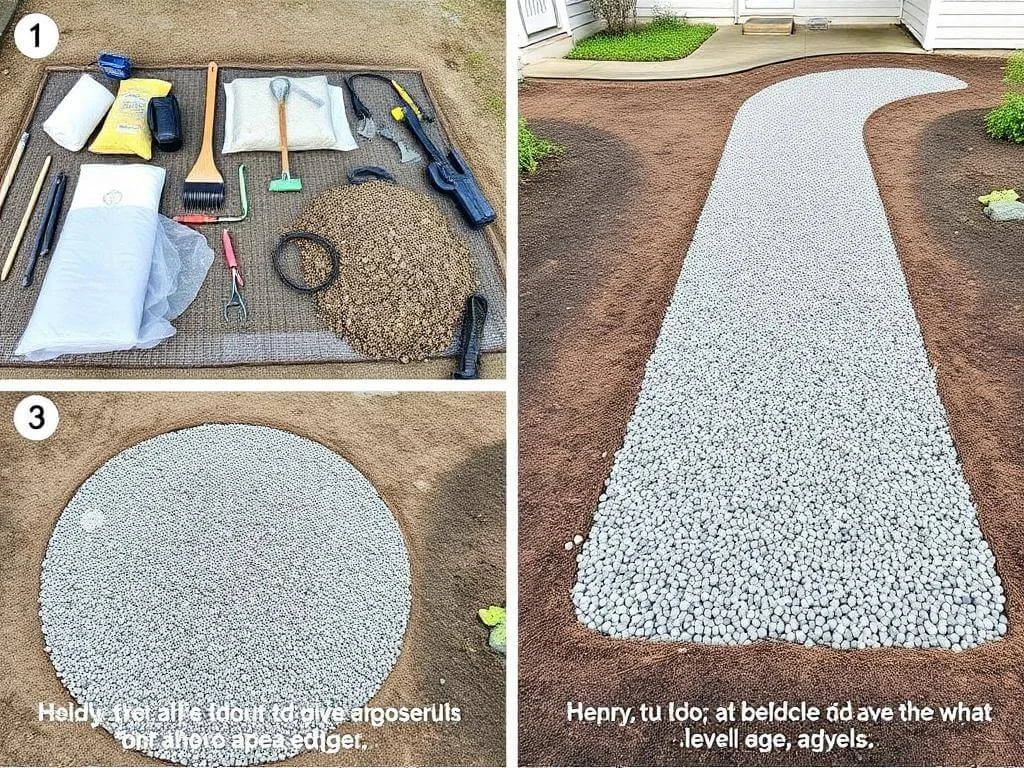
e. Maintaining and Caring for Pea Gravel
Pea gravel is a low-maintenance material that enhances the aesthetic and functionality of various outdoor spaces. However, regular upkeep is essential to preserve its appearance and performance. Below are some practical tips and strategies for maintaining and caring for pea gravel:
1. Regular Raking to Maintain Evenness
Over time, foot traffic, weather conditions, and other factors can cause pea gravel to shift or become uneven. Raking the surface periodically helps redistribute the stones evenly, ensuring a smooth and attractive finish. For large areas, use a wide-tooth rake, while smaller areas can be adjusted manually.
2. Preventing and Managing Weeds
Although pea gravel provides some weed resistance, unwanted plants can still emerge, especially if a weed barrier wasn’t installed during the initial setup. To keep weeds at bay:
- Use a pre-emergent herbicide to prevent weed seeds from germinating.
- Manually remove any visible weeds, pulling them out by the roots to prevent regrowth.
- Inspect the area regularly, especially after heavy rain, which can expose gaps in the weed barrier.
3. Replenishing Pea Gravel Over Time
Normal wear and tear, as well as displacement from foot traffic or erosion, can reduce the depth of pea gravel over time. To maintain the desired thickness, add fresh pea gravel as needed. This not only restores the area’s appearance but also enhances its functionality, such as drainage and cushioning properties.
4. Cleaning the Surface
Pea gravel can accumulate dirt, debris, and organic matter like leaves and twigs. Keeping the surface clean helps maintain its visual appeal and prevents issues like mold or algae growth. For effective cleaning:
- Use a leaf blower to remove lightweight debris.
- Rinse the gravel with water to wash away dirt and dust.
- For more thorough cleaning, consider using a pressure washer set to a gentle setting to avoid displacing the stones.
5. Addressing Erosion and Drainage Issues
If water flow or heavy rainfall causes erosion or displacement of pea gravel, take steps to prevent further damage:
- Adjust the landscape to redirect water flow away from the gravel area.
- Add more pea gravel in eroded spots to restore the surface.
- Install edging or borders to help contain the gravel and minimize movement.
6. Protecting Against Compaction
Although pea gravel is naturally resistant to compaction, high-traffic areas may still experience some settling over time. To address this:
- Use a tamper to re-level compacted areas.
- Avoid overloading the surface with heavy objects or vehicles that could press the stones into the ground.
7. Seasonal Maintenance
Different seasons may require specific maintenance tasks to keep pea gravel in optimal condition:
- Spring: Clear away any debris left from winter, refresh the gravel layer, and check for weed growth.
- Summer: Monitor for erosion or displacement from storms, and ensure the area remains level.
- Fall: Remove fallen leaves to prevent mold or discoloration.
- Winter: If pea gravel is used in pathways or driveways, consider adding sand or salt to improve traction during icy conditions.
By following these maintenance practices, you can enjoy the beauty and functionality of pea gravel for years to come. A little routine care goes a long way in preserving the value and appeal of this versatile material.
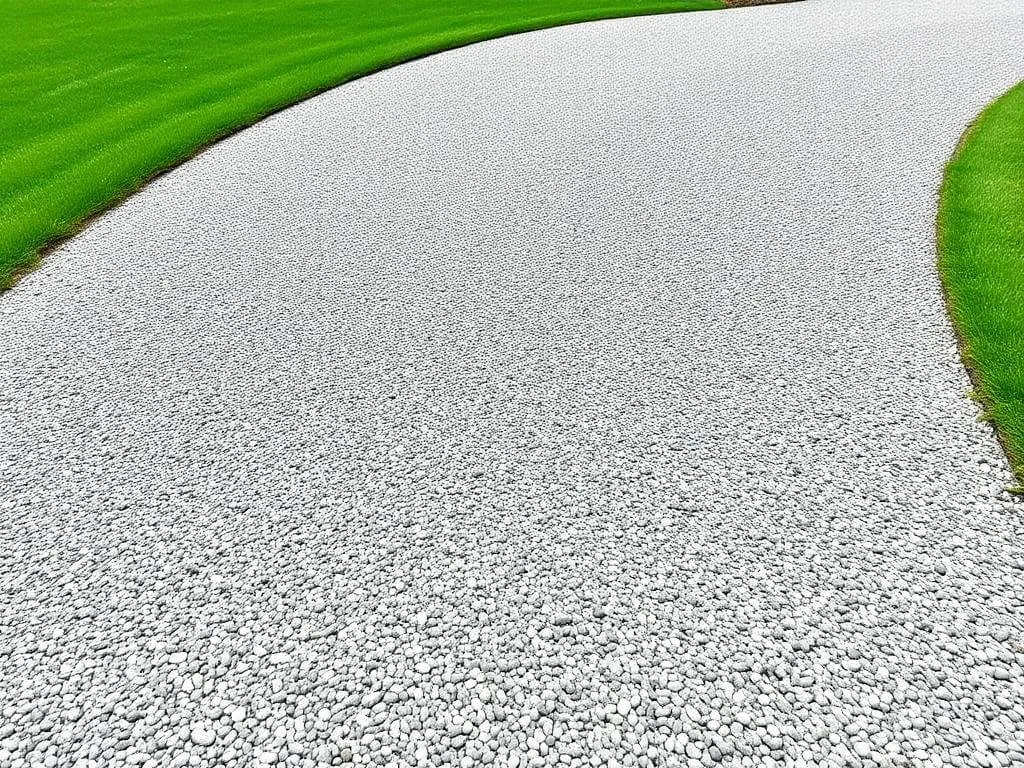
Conclusion
Pea gravel is a versatile and attractive material that brings practicality and elegance to a wide range of landscaping projects. From creating inviting walkways and serene garden beds to enhancing patios and water features, its smooth texture and natural appearance make it a popular choice among homeowners and professionals alike.
Proper installation and regular maintenance ensure that your pea gravel spaces remain functional and visually appealing for years to come. By understanding its benefits, uses, and care requirements, you can confidently incorporate pea gravel into your outdoor designs and enjoy a durable, low-maintenance solution that enhances your property’s charm.
Whether you’re refreshing your backyard or embarking on a larger landscaping endeavor, pea gravel offers endless possibilities to elevate your space with ease and style.
